Joetta Maue believes in the power and beauty of the ordinary, and she combines photography, drawing and stitch to help us all see what she sees.
Whether it’s cuddling a baby while making dinner, staring at a broken window shade or even the simple act of getting up in the morning, all are honoured through her use of stitch on found linens. Even dust is celebrated!
Joetta offered us an insider’s look into both her philosophy and techniques. Her route to textile art is interesting, and she explains how drawing and photography inform her work. She also shares her thoughts about sprinkling text through her work, and the new directions in which ‘the ordinary’ is taking her.
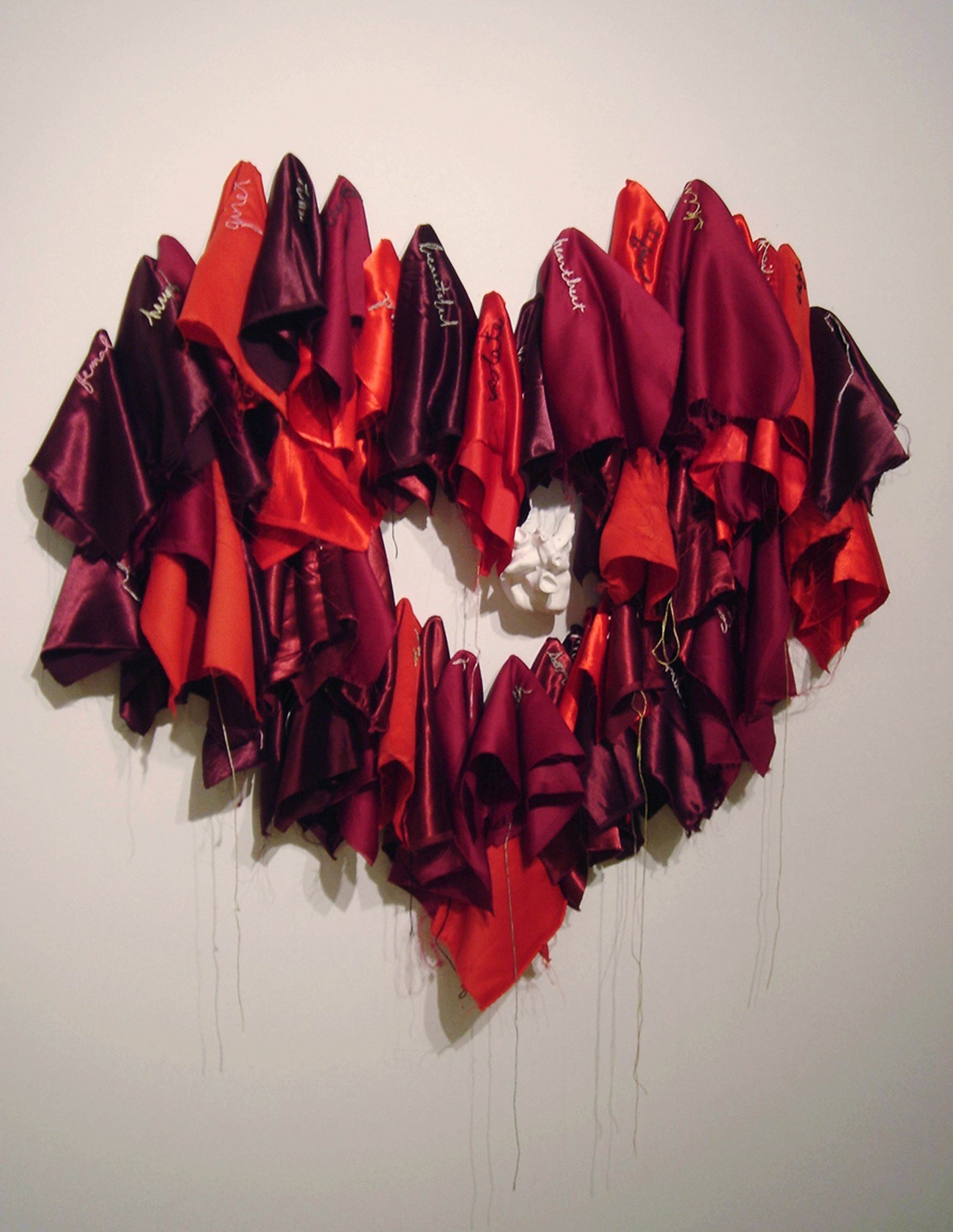
Like coming home
What attracted you to working with textiles?
Joetta Maue: I was initially attracted to embroidery for conceptual reasons. I was trying to end a long-standing body of work that had to do with trauma and I wanted to make one final piece to complete the work.
I felt that embroidery was a perfect medium due to its meditative quality and the physical act of stitch and the idea of suturing – all in connection to ideas of healing.
I ended up teaching myself to embroider in order to make the piece. I stitched embroidered 75-100 small pieces of red satin with words that connected to the act of healing, both physically and psychologically. This became a wall installation that was installed at the Sol Koffler Gallery at Rhode Island School of Design.
I expected this to be a one-off piece, and then I would return to my primary mediums of photography and printmaking – but I was hooked.
I often describe it as feeling like coming home: the tactility and familiarity of the cloth and thread, the slow, sometimes passive labor of the stitching, and the hours of quietly sitting with my work.
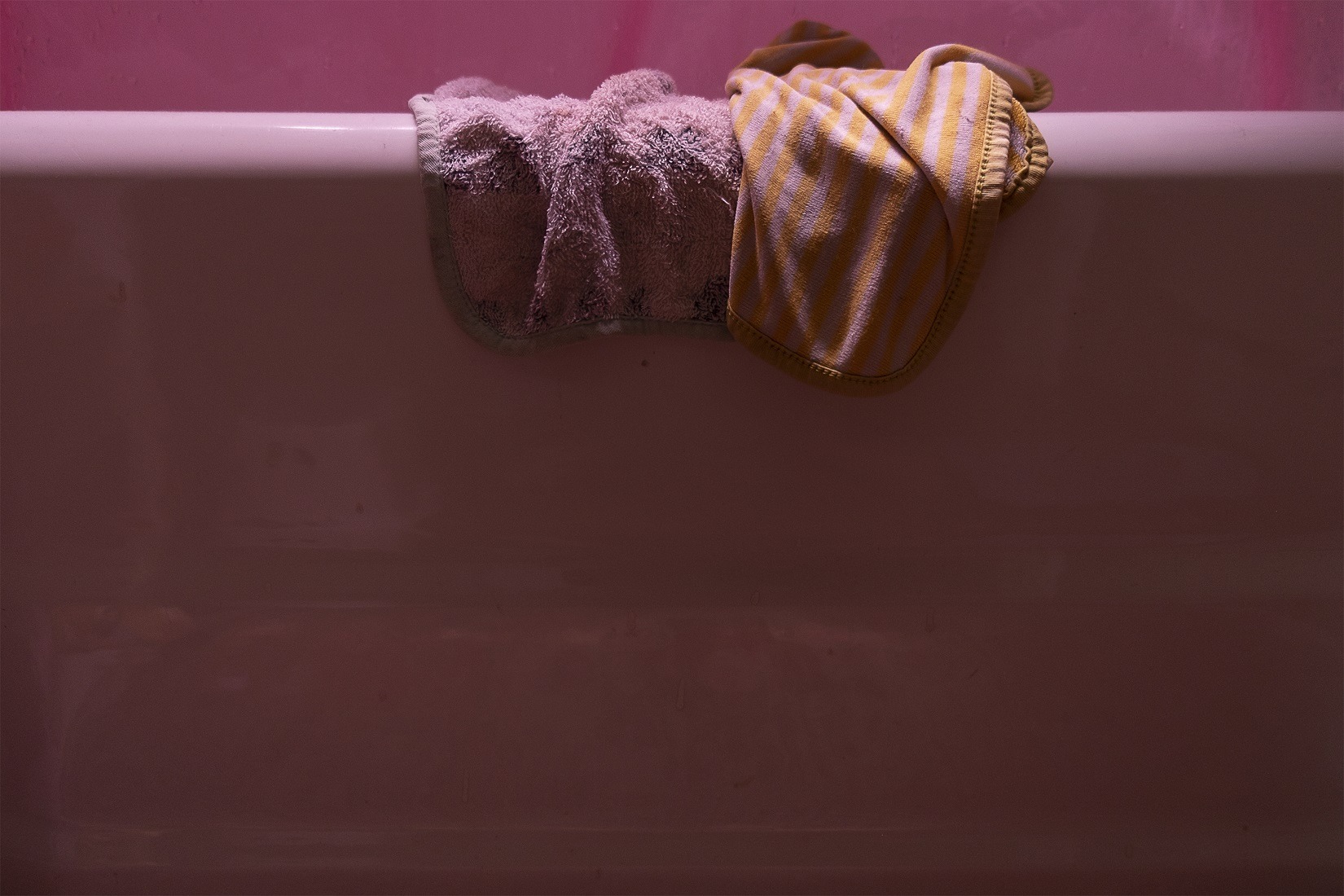
What or who were your early influences?
I studied photography and installation initially, and my greatest early artistic influences are still based in those realms. Very early on I fell in love with the photographer Sally Mann’s body of work Immediate Family, as well as the photography of Uta Barth. I love how their work takes ordinary moments, environments and people, enriching them rich with beauty and reverence.
I think due to my very traditional and ordinary Midwestern upbringing, I longed to see art that I could relate to in a physical way. But I am also striving to understand and celebrate the mysteries of life and our existence. Textile art can relate to both the physical and intellectual needs.
In graduate school, I fell in deep love with the drawings and writings of Louise Bourgeois. I have studied her life and her work in-depth but I mostly resonate with the smaller, more intimate, works. Her raw honesty and strength in her writings and her Insomnia drawings still bake my breath away.
I also find the paintings of Joan Mitchell to be stunning. And if I could only live with one piece of art, it would be a large painting of hers. Her use of colour and line quality is stunning – it hits you right in the gut. She makes monumental expressive paintings, with the most simple and banal title. The mystery of this is fascinating to me.
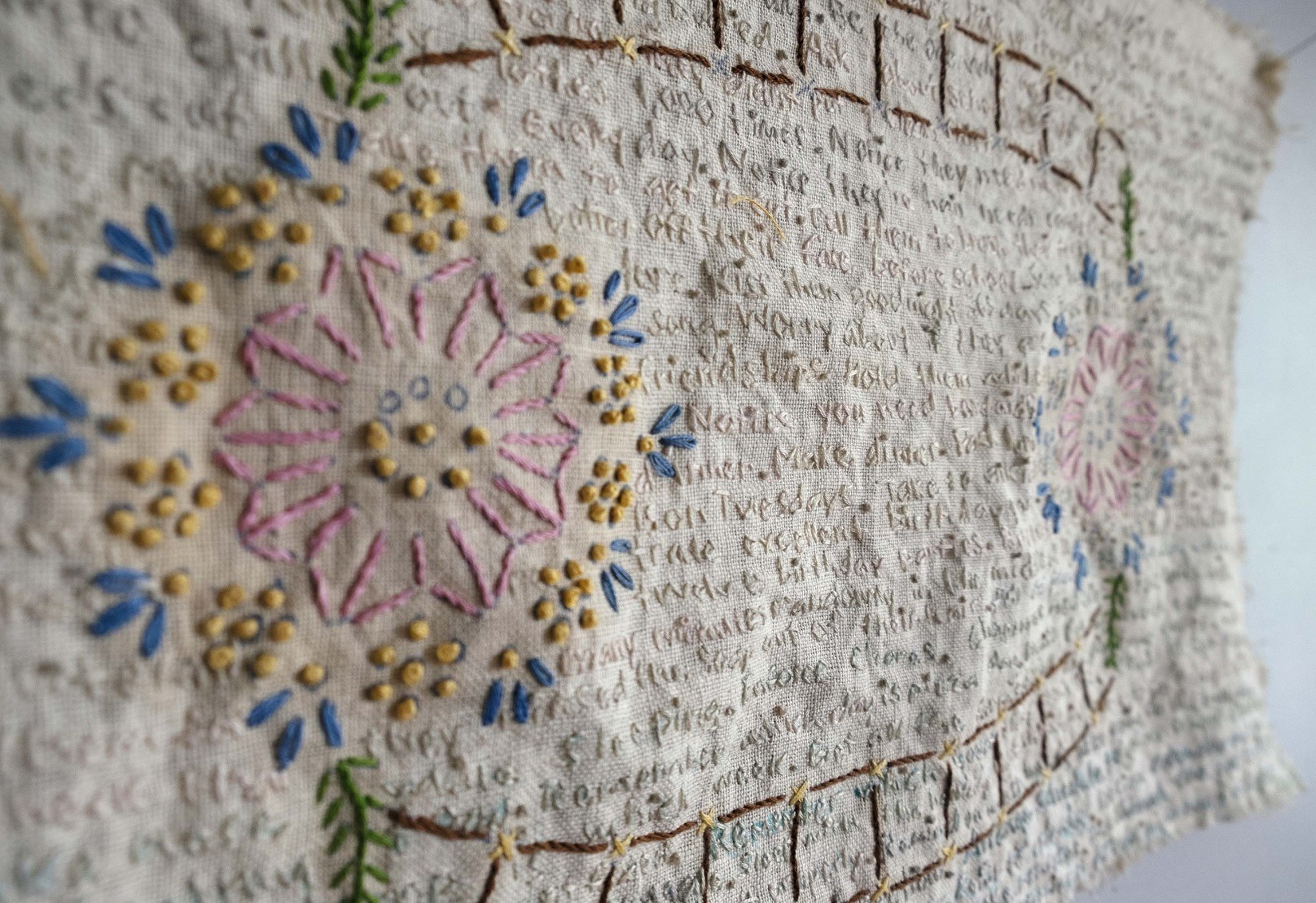
What was your route to becoming an artist?
I started to take art classes in high school and pretty quickly knew it was my world. My school has an excellent art program, and I was able to study photography. As soon as I saw my first photo develop sitting in the darkroom tray, I knew this was what I wanted to study.
My undergraduate was a traditional photography programme. I resented all the foundation drawing courses I had to take, but I loved the technical development of colour work and the conceptual thinking about imagery. It was only in graduate school that all those drawing classes started to be valued, and I began to work in a more cross-disciplinary fashion.
My program was very interdisciplinary. Even though I had a photography focus, I was encouraged to work in and take classes in many mediums. And I worked with painters and sculptors every day. I sort of fell into making textile-based work, and I identify more as an artist than a textile artist.
Embroidery and found linens serve the conceptual story and conversation in which I am interested. They are tools for me as an artist. But my writing, photographic and drawing practice are equally important.
I have been in many ‘art worlds,’ but in the end, the one I need the most is the one where I am alone in my studio walking around inside my brain.
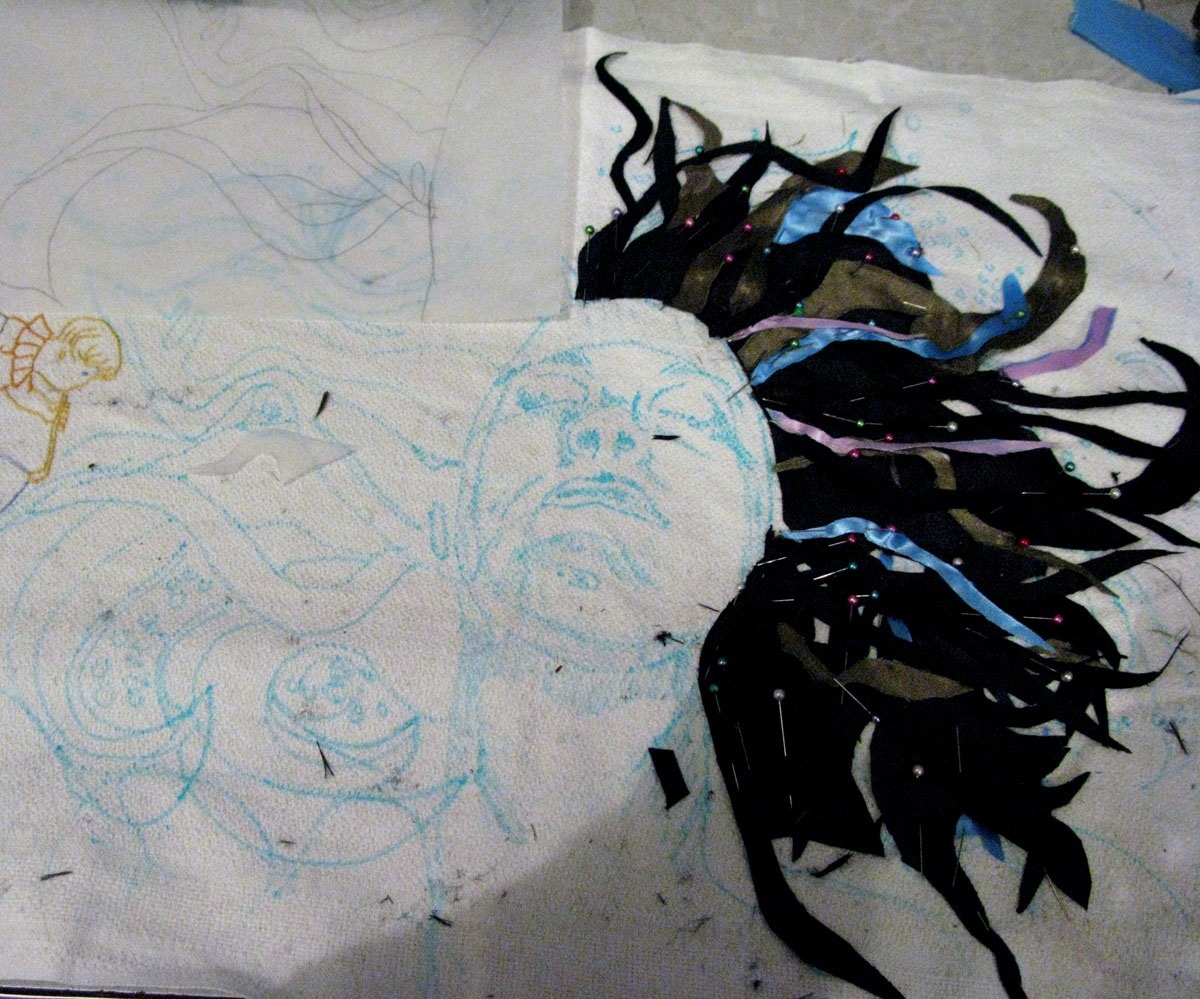
Found linens bear witness
Tell us about your process from conception to creation…
For my textile work, it varies a little bit. Sometimes I start with the idea and have to look for my image. And sometimes the image arrives in my mind and I feel compelled to make it.
But it all starts with a photograph. Usually, an image that is beautiful in form, but that, as a photo, does not quite land right.
I select a piece of found linen to hold the piece. I might be looking for something aesthetic in a piece or emotion or fragility or sense in the linen. I used to use the linens more as a decorative framing device, whereas now I am usually looking for some kind of ethos or witnessing.
I project the photograph onto the linen and turn the photograph into a line drawing and stitching map. This used to be a pretty tight drawing that I followed exactly. But now it is much looser, and I make many decisions in the moment of stitching.
Then it’s about colour. This tends to happen in series. I have made works in full colour, all black, all white, muted and minimal. But generally, it has to do with what I want the focus to be in the work.
Then I stitch and stitch and stitch and stitch…
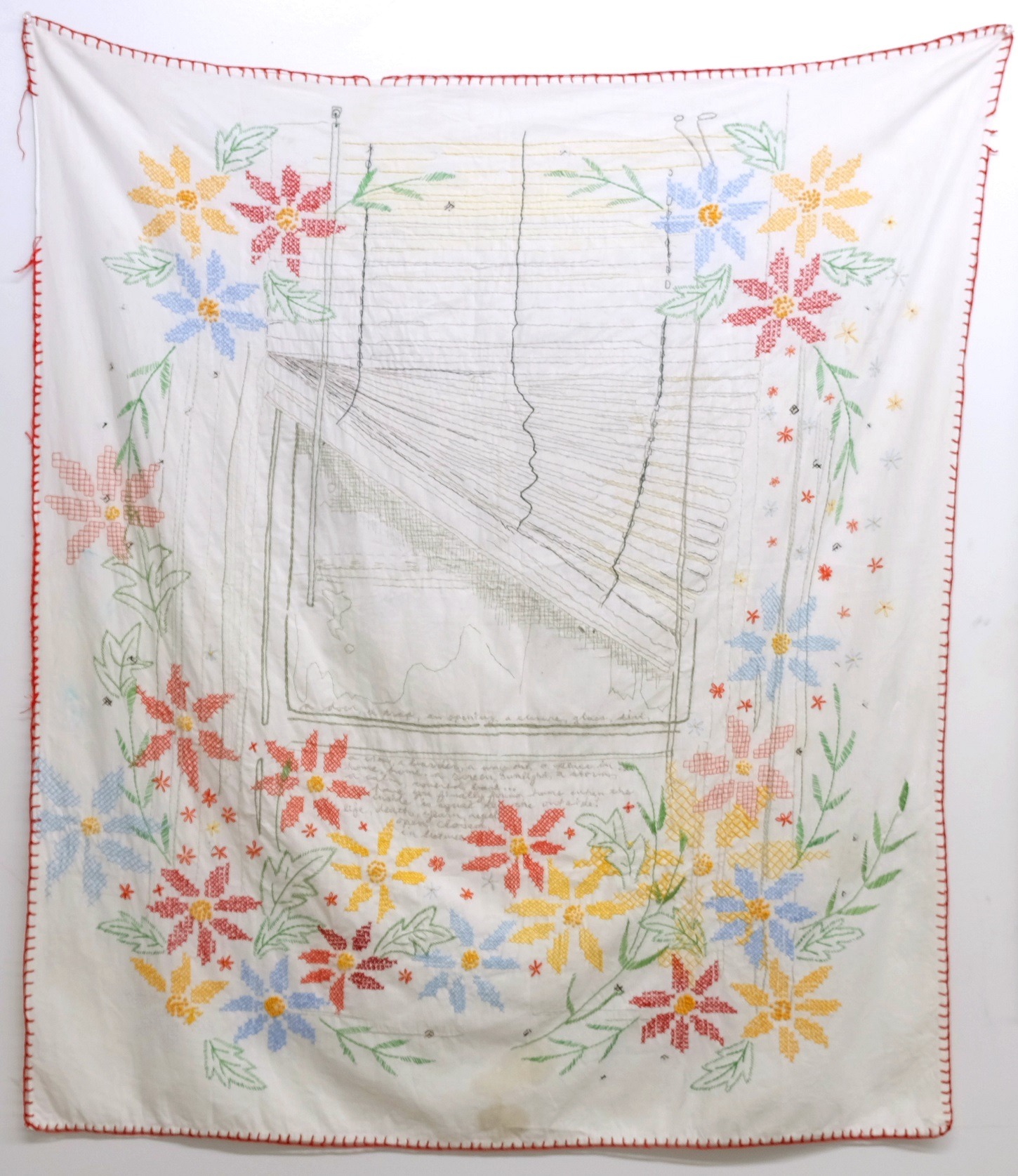
Tell us about your techniques and how you use them…
I love embroidery because of the slow labour and the nuanced line. The quality of my line and drawing has become more and more important to me as my work matures – with embroidery you can draw with thread.
I am interested in the labour of loving, mothering, living and caring for the domestic space. Embroidery can be an actual moment of labour, while responding to these thoughts. It can also represent the love and commitment I am interested in meditating on. It takes so much time, love and follow-through to complete the large scale works I create.
I work with found linens, as they bring a witnessing of the spaces and relationships that I am exploring to the work. It is also important that my materials remain in the everyday experience, so I tend to only use used linens and cotton/linen materials. I do not want things to become too precious, but instead remain approachable and linked our daily existence.
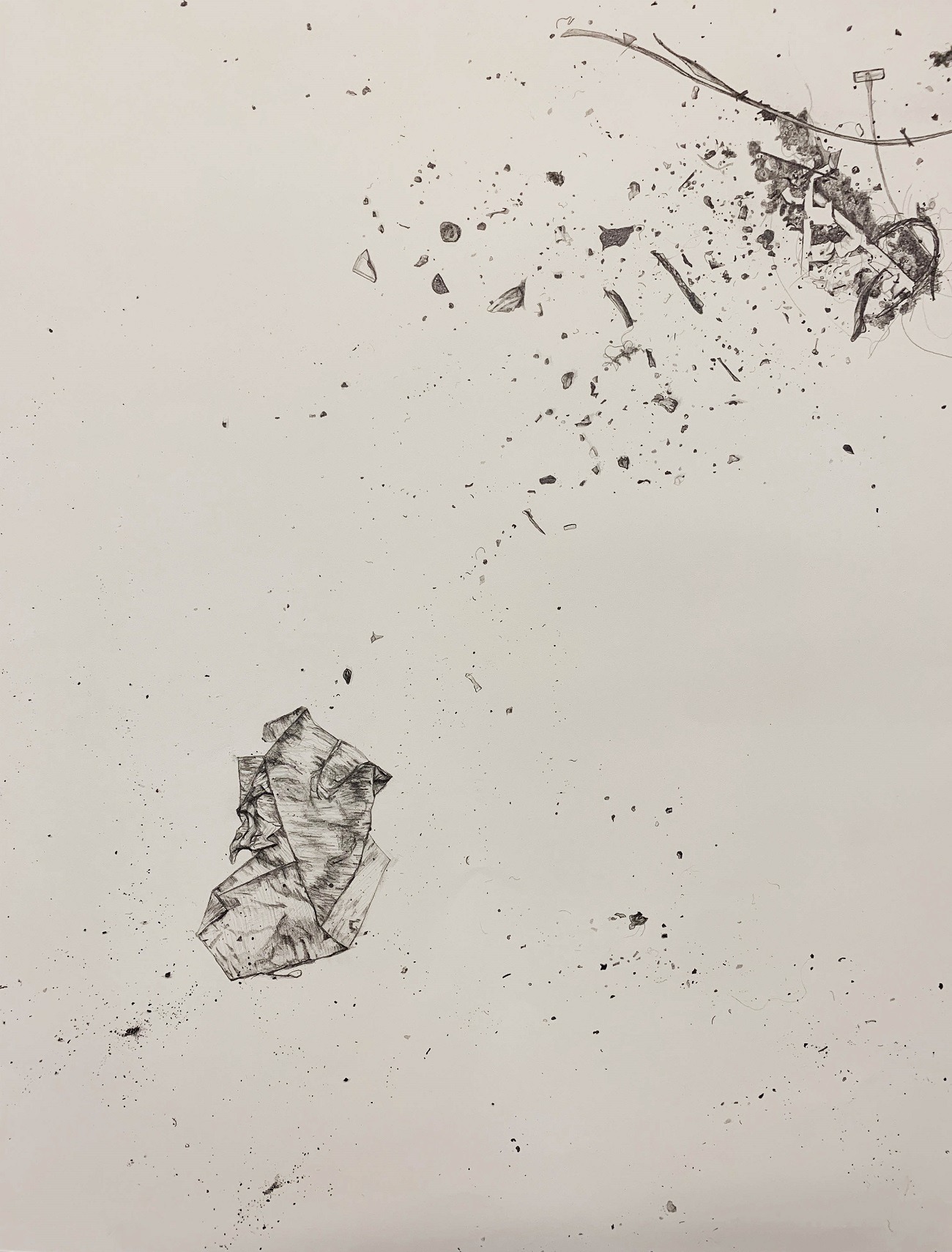
What currently inspires you?
My constant muse is light – I follow the light. This allows me to see things in a new way or in a way I would normally overlook, even the dust on the windowsill or a pile of dirt on the floor.
I am particularly fascinated by dust – how it dances in the air and in light shafts. Dust is literally made up of us, our skin, our hair, our clothes and our food.
I collected the sweepings of my kitchen and made high-resolution scans of them as documents, which I used as a reference to make highly detailed, but often abstract, drawings.
I am also inspired by daily life and its gut-wrenching complexity and beauty, and the act of mothering, partnering and caring – my work explores all these themes.
But my direction changes as my life and my relationships change. For example, I explore aging, and how my thoughts and ideas change over time. And I aim to bring some ambiguity into my work and allow more room for the viewer’s experience.
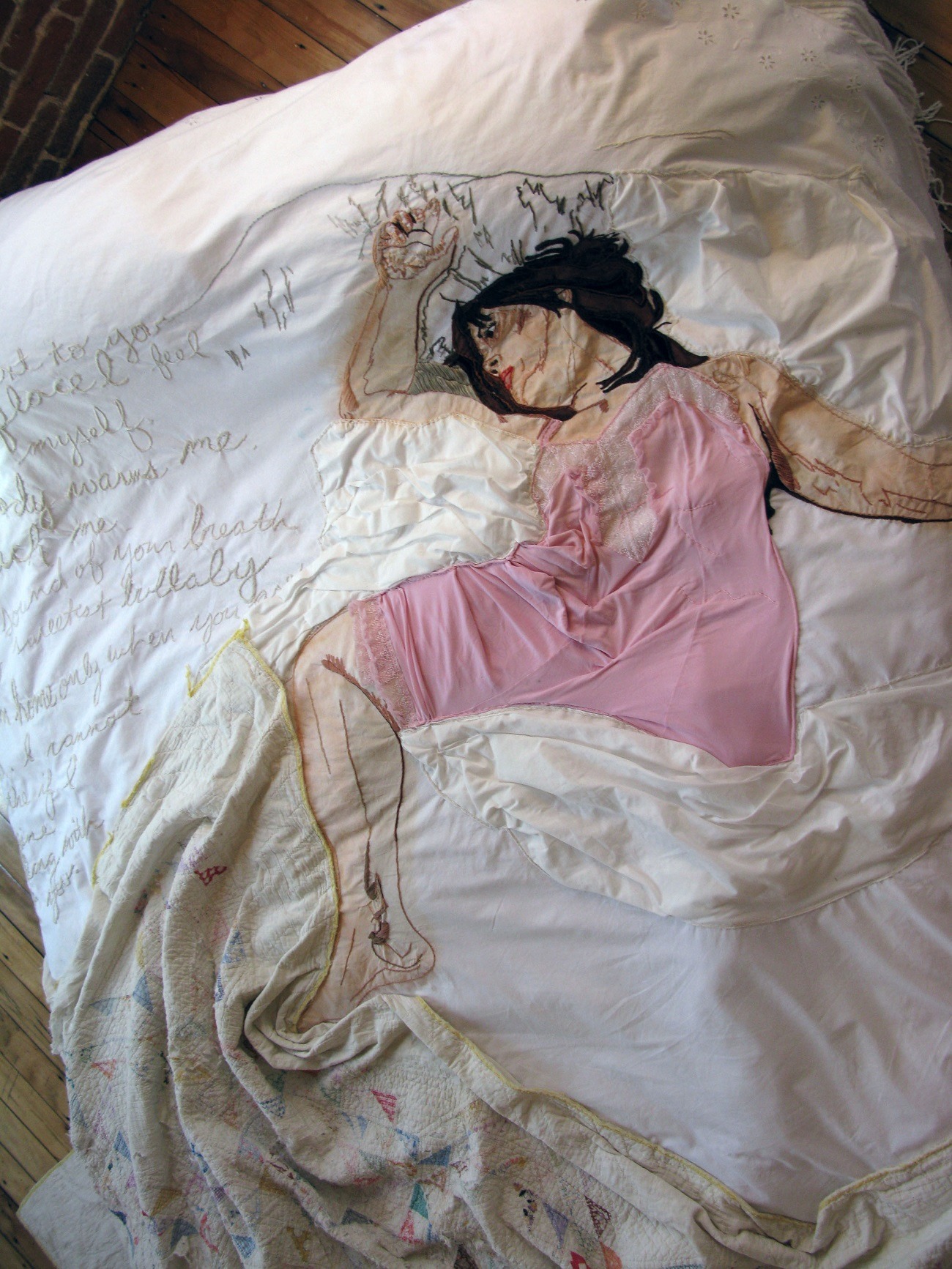
The importance of drawing
Tell us about a piece of your work that holds fond memories…
Waking With You is a very important piece for me. It was the first life-sized piece I made. I had a vision for it as the anchor piece of a solo show. I had to learn and problem solve a lot in the process of making such a large piece.
In the end, it was a great piece for my development as an artist. The process really pushed me technically and led me into an entirely new direction for my work leading to what eventually became the The Sleeper Series, which was an important body of work for me.
Waking With You also really connects my love and use of text with my love of the narrative portrait.
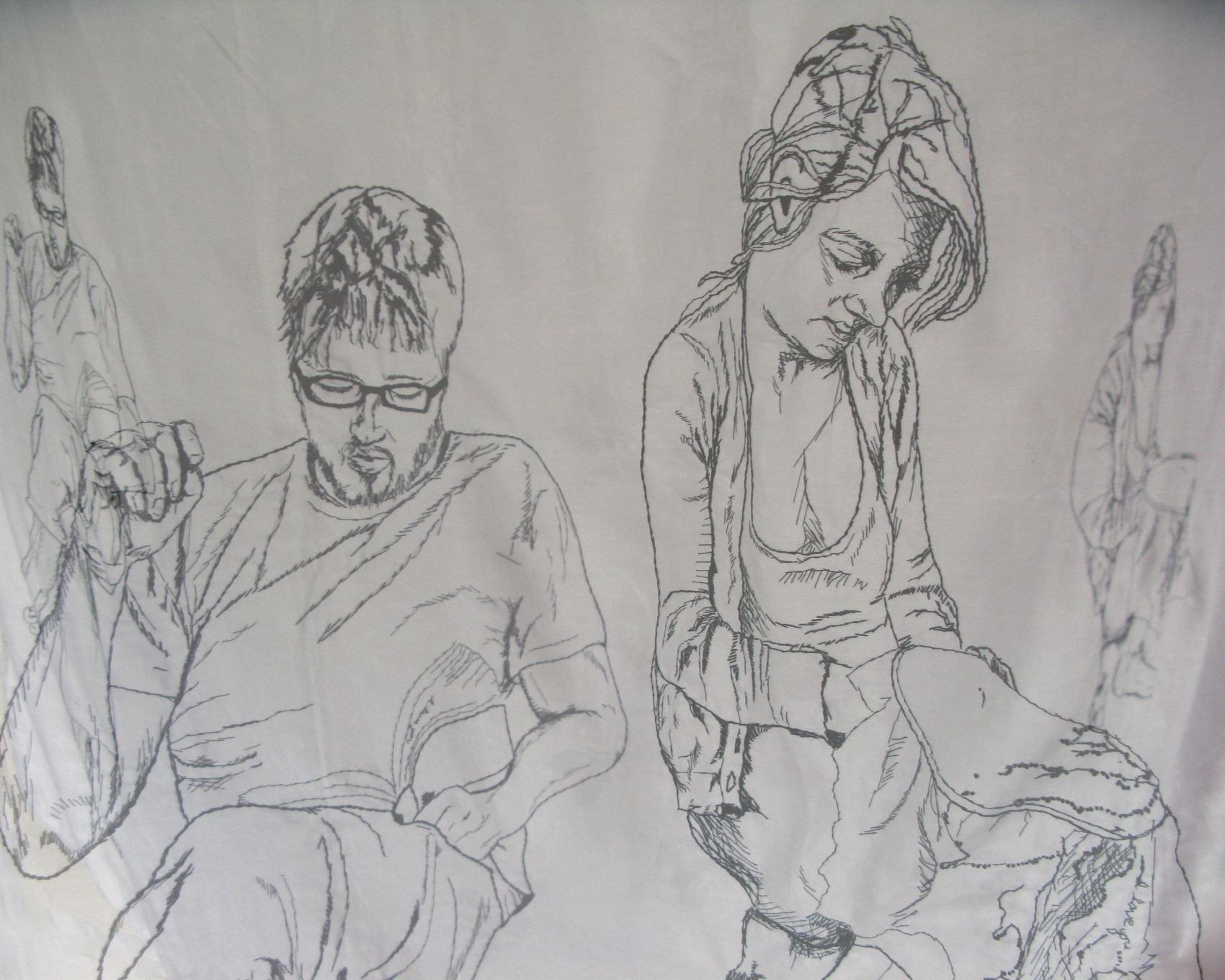
How has your work evolved?
My work has become more and more focused on the drawing quality of the stitches, and less specific about the narrative. I did not originally consider myself as someone who really knew how to draw. But drawing and the subtly that a stitched line can bring to a piece has become really valuable in my studio practice.
I have been working to open up the narrative – by being specific, but also ambiguous. I do not want my art to be about my life and my story. Instead, I want it to encompass the universal experience of humanity, womanhood and motherhood.
Technically I go back and forth between things, sometimes stripping away elements and sometimes building things up. I focus on capturing the expressiveness of my line quality and the open nature of my embroidery drawing style. I explore different textures of threads with the aim of emulating the quality that charcoal gives.
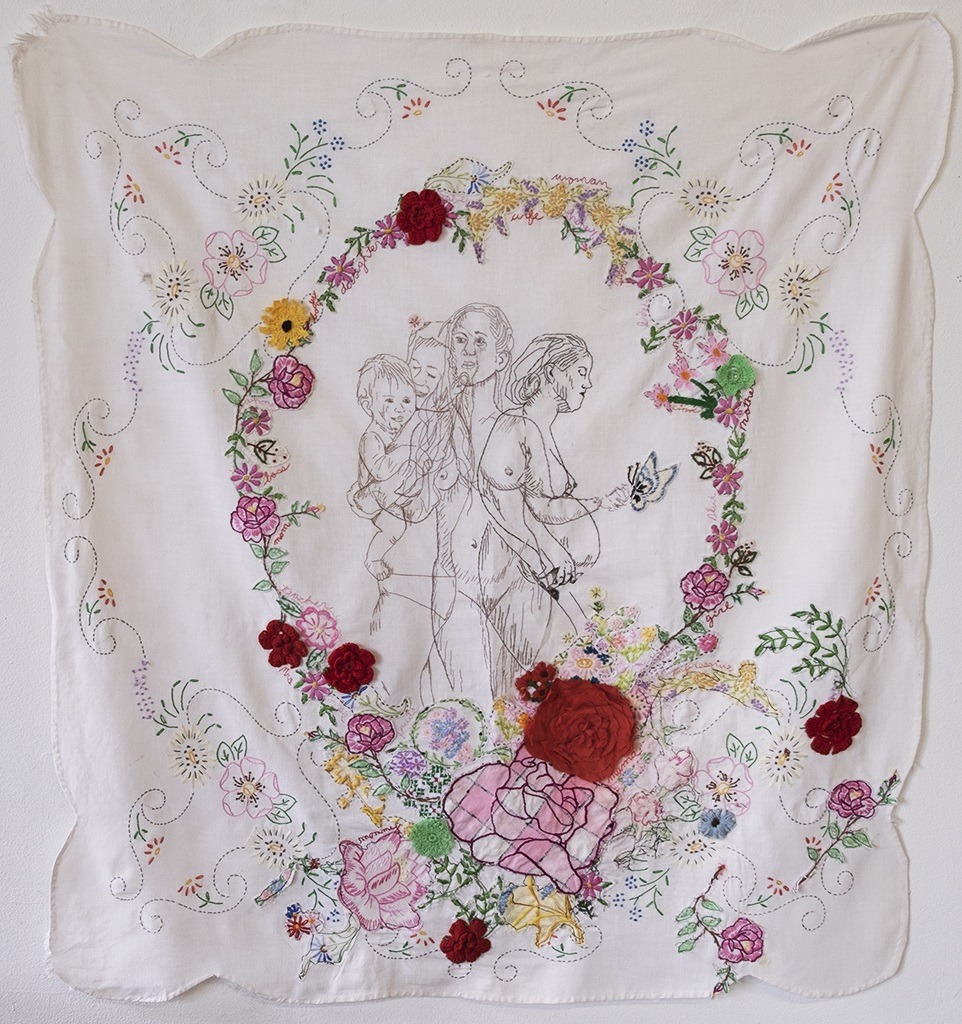
What advice would you give to an aspiring textile artist?
I think it is quite important to understand why you are drawn to textiles and why you are using them. This adds more depth and meaning to the choice of textiles and cloth. In the contemporary art world, this is meaningful.
I also feel that rules are meant to be broken. To me, the most interesting artists using textiles are breaking down the traditions and barriers of the medium, even in the same process of exploring and honouring the history.
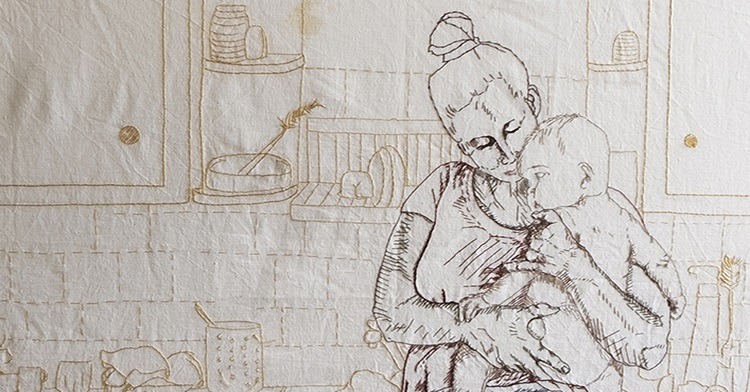

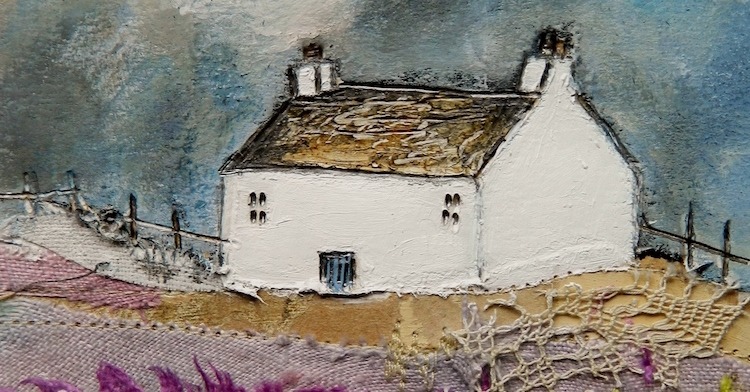
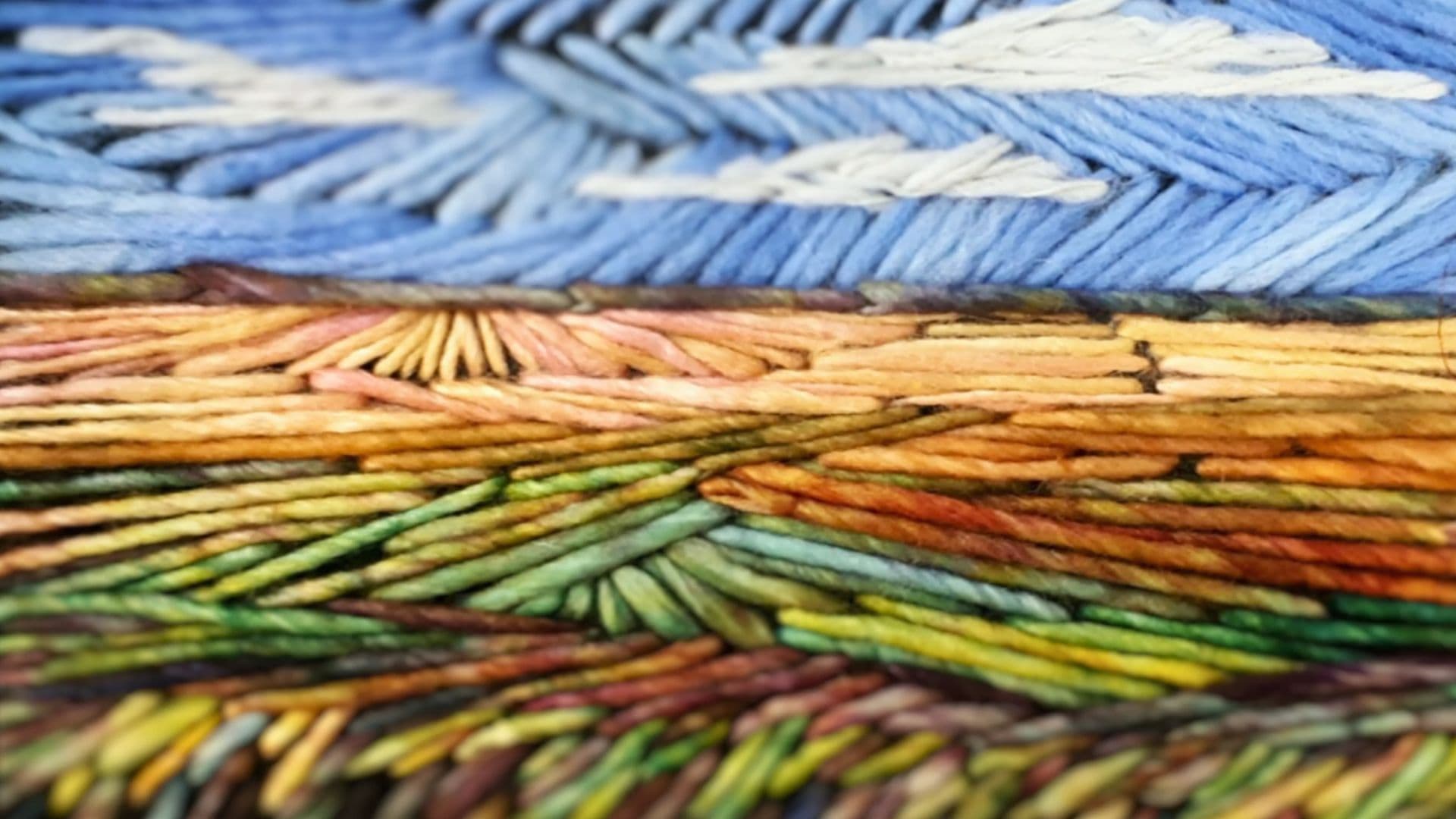
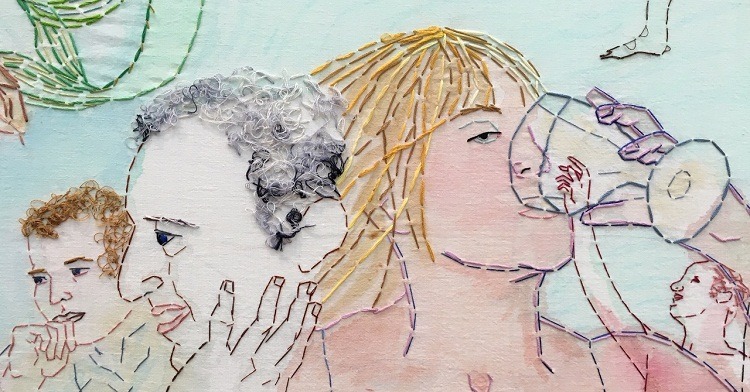
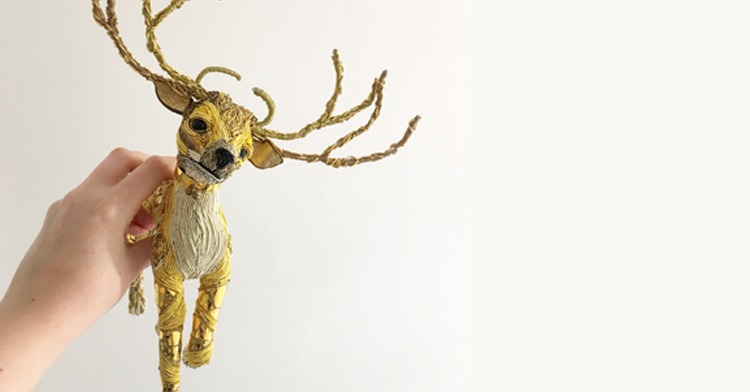
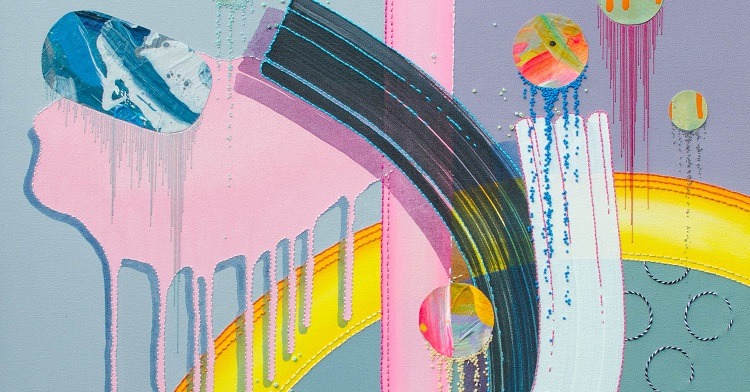
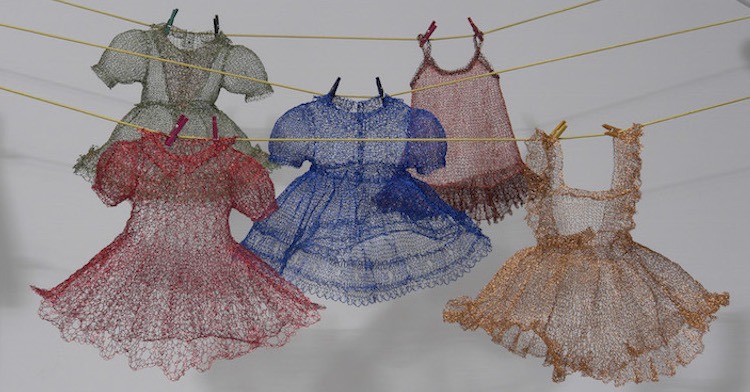
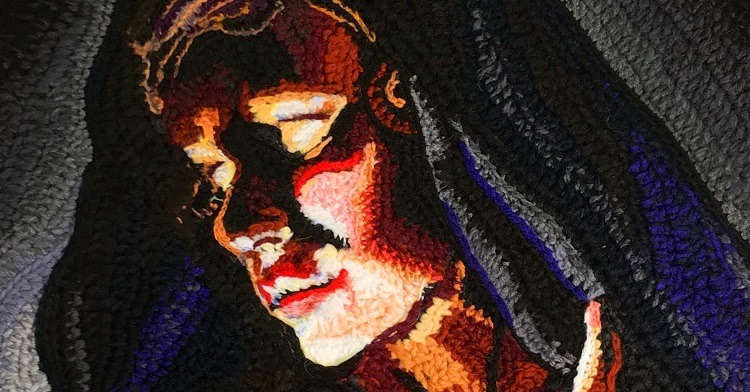
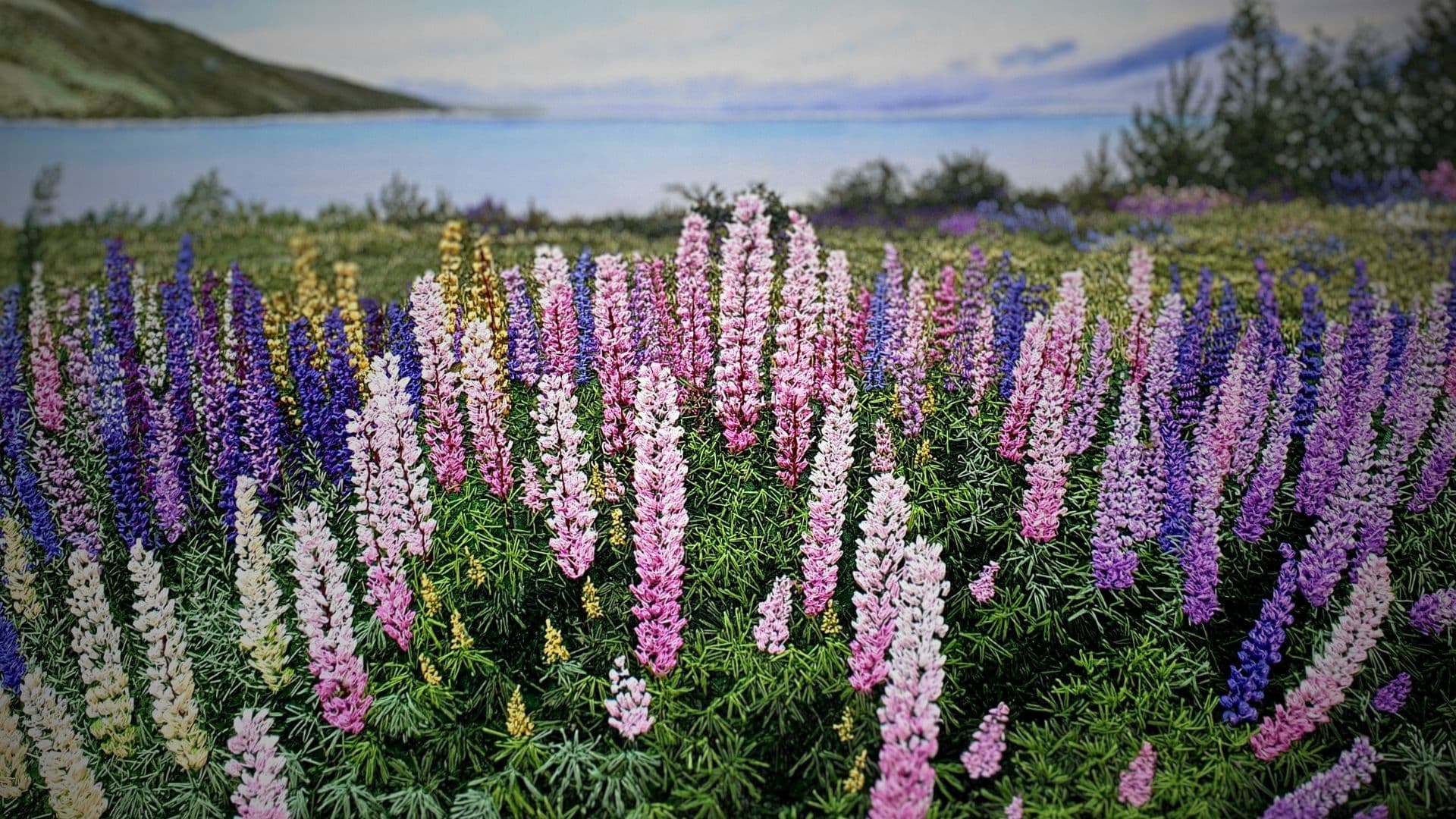
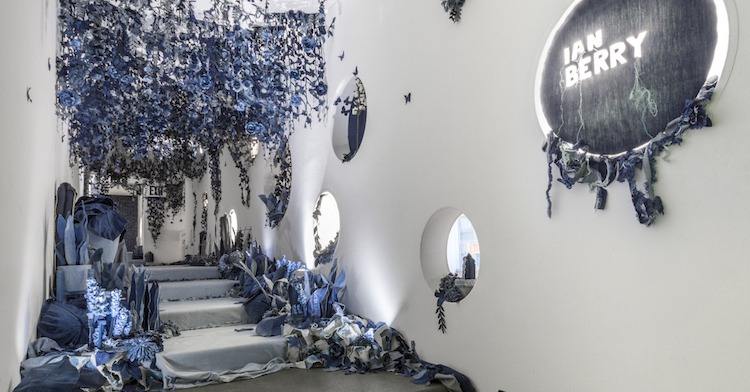
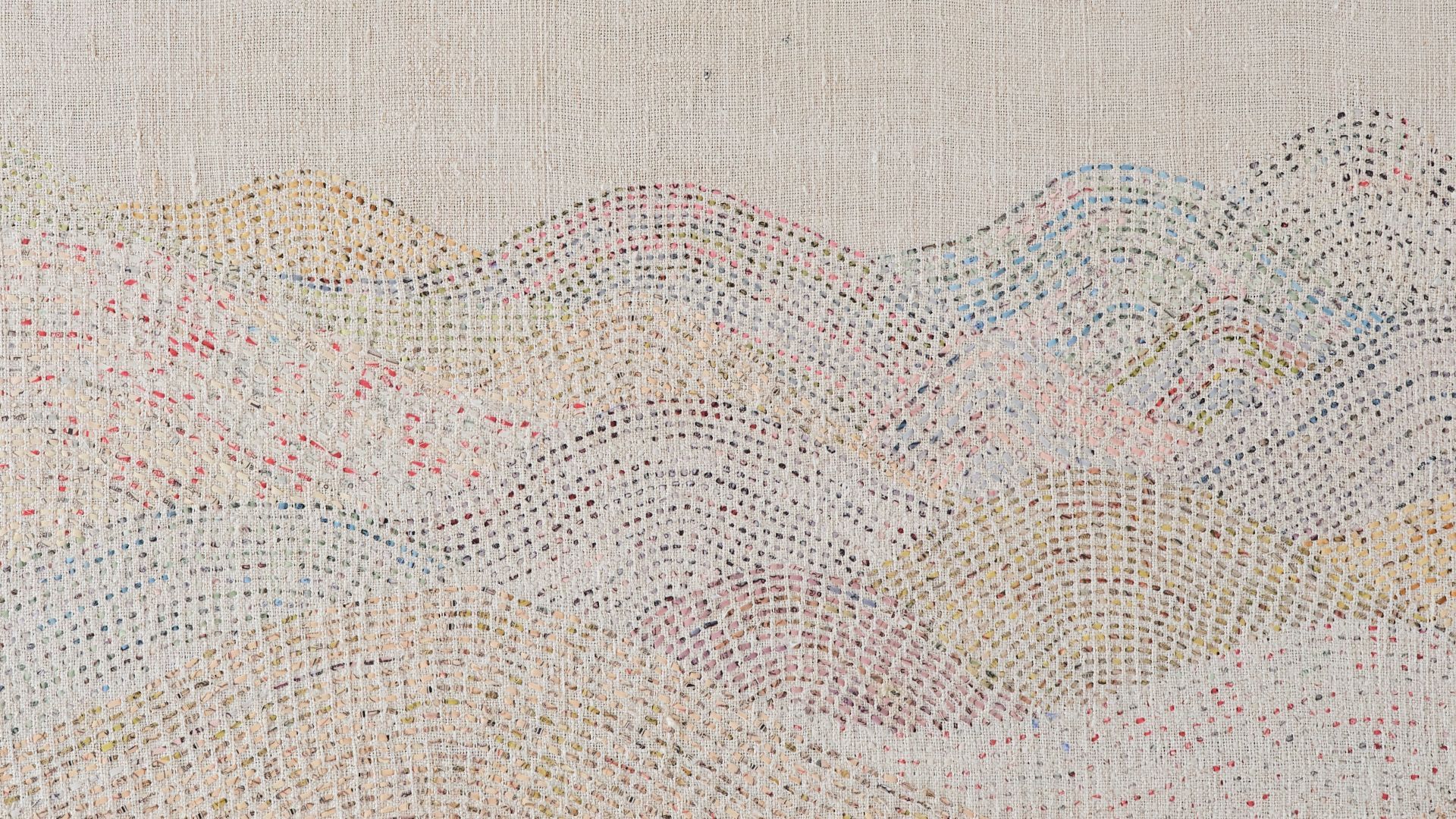
6 comments
Linda
Wonderful work
J.J. Martyn
Such beautiful and emotional work.
JoAnn Janjigian
Terrific article about Joetta. Her work is thought-provoking and amazing. Always pushing boundaries. Thanks for a great article!
Kathryn Glowen
Just read 2 wonderful books
a History of the small and the invisible DUST J. A. Amato and
the secret life of Dust- from the cosmos to the kitchen counter, the big consequences of little things.
Both great reads. Kathy
sally roll
So creative and inspiring. Just need to slow down and play a little. Thank you for sharing your thoughts and pictures. I loved it!
JP
Love Joettas work! And, Taking a class with her is always a pleasure.